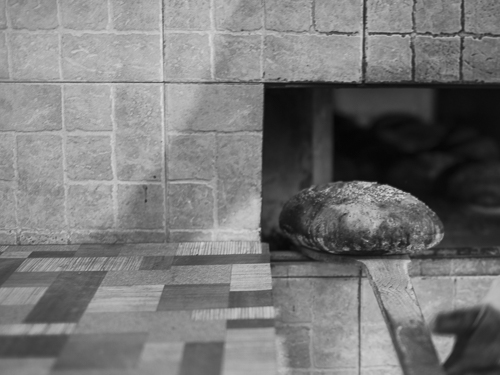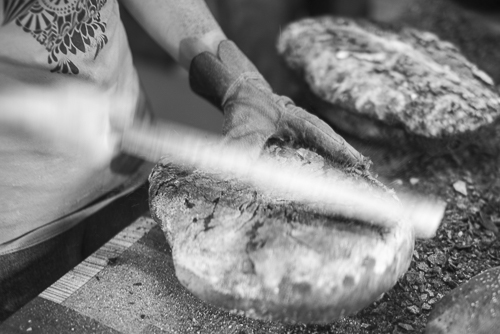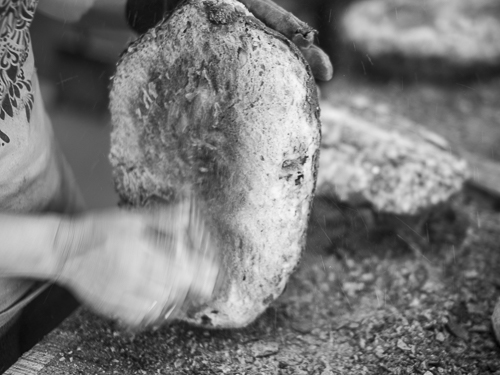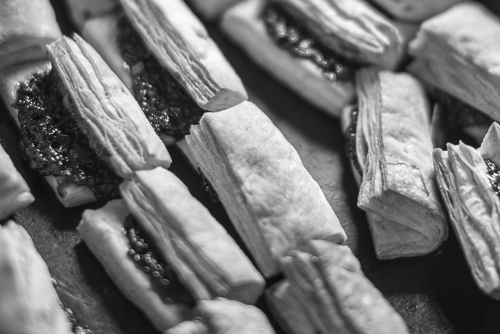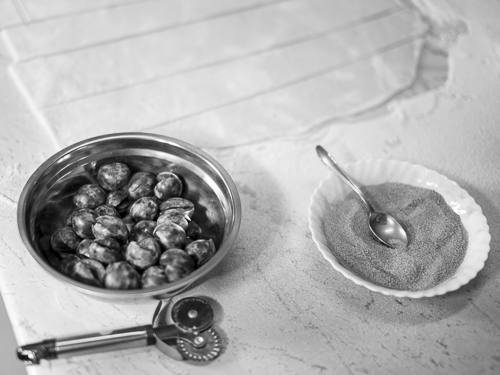In the village of Ciumani, we visited the local tourist office where a young woman was working. She obligingly showed us the way to the Jánosi bakery, which was run by a woman called Jánosi Veronika.
15 years ago, her husband died when he was 50, she was alone with two children, girl and boy, and she needed to survive and provide for the children. She was a housewife and she knew how to make bread. Luckily, she owned some potato fields, but she needed help with picking the potatoes. In return, she gave the workers homemade bread with potatoes and they liked it.
Her mother and grandmother gave her recipes and she started a bakery in the middle of the village. She had a small oven and she made bread twice a week. Now, they are making bread every day except Sundays.
During our visit, she used a pizza paddle to take out breads from the wood-fired oven, next she laid them on a bench where 2 women were knocking and scraping the crust of the freshly made breads in order to get rid of the burnt parts.
The guide from the tourist office told us that customers arrive when the bread is just made and several arrived during our short visit. Besides Mrs Jánosi has customers from the village and even customers from nearby villages.
The ingredients of the bread are wheat flour, water, yeast, salt and potatoes and the bread remains fresh because of the potatoes. We were given fresh bread with homemade jam and it was delicious!
When we were enjoying the fresh bread, the workers started making a cake called Hájas tészta, which is made by flattening the dough, apply pig’s fat evenly on the surface, fold the dough, apply another even layer of fat and fold the dough again. Bake it in an oven and add plum jam after it has finished. By doing the folding together with compressing several times, the finished result resembles the consistency of a Danish pastry.
Afterwards, they made gombóc, which is a Hungarian plum dumpling. My local guide gave me the following spoken recipe: make a cut in a plum and remove the seed, fill it with a mixture of cinnamon and sugar, put it on a small piece of flat dough, fold the dough around the plum, put it in boiling water and take it out again.
The workers start making dough at 3 in the morning and they can go home at 10 in the morning, but this day, they were working longer. All the workers are in family and Mrs Jánosi’s son and daughter-in-law will take over the bakery in some time.
Mrs Jánosi prefers quality and not quantity and I suppose that philosophy will govern the bakery with the new owners too.
